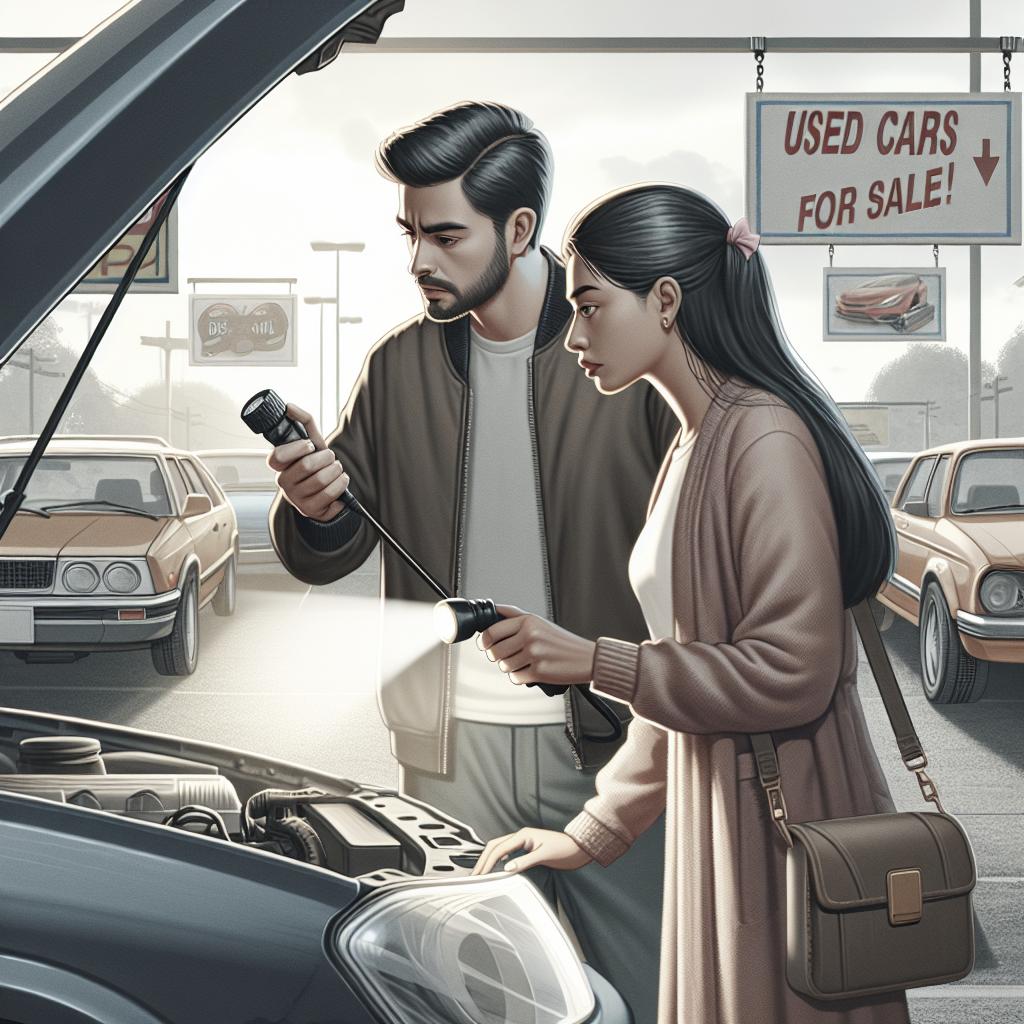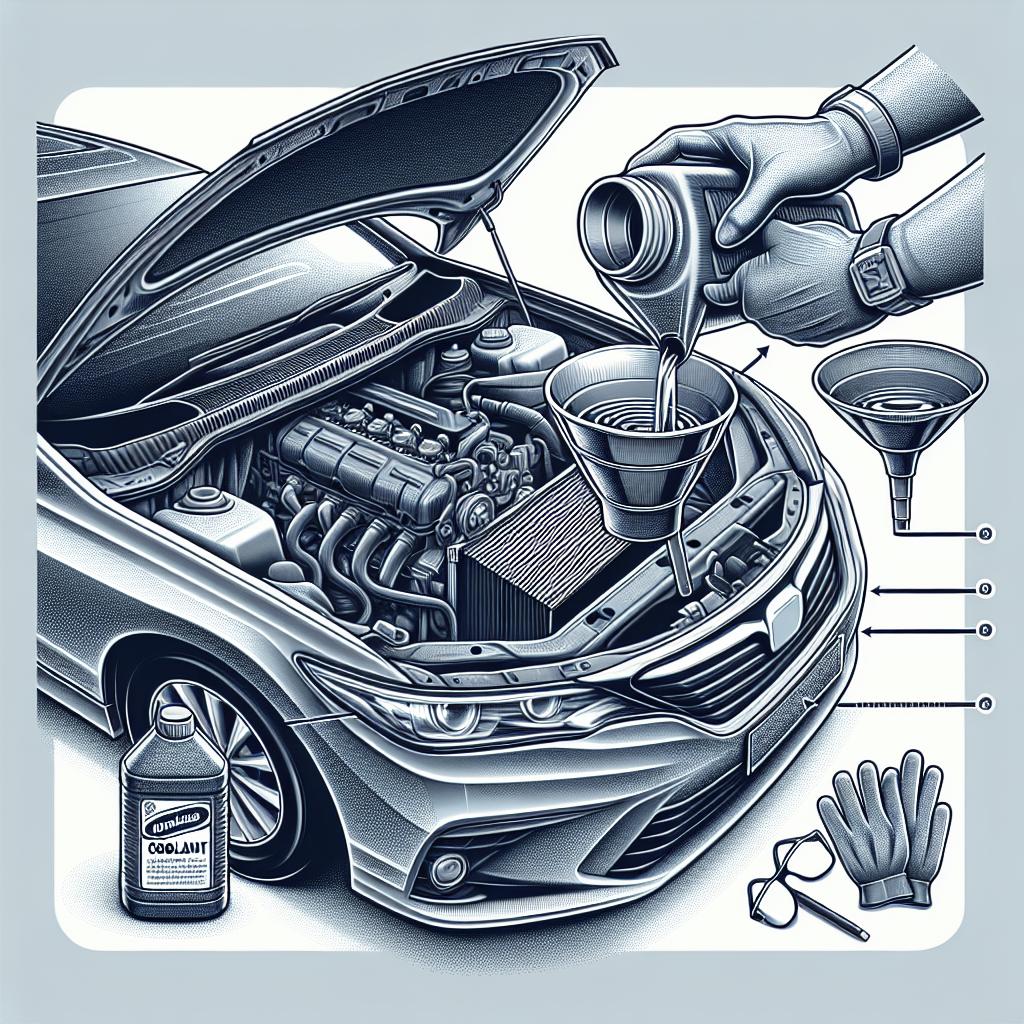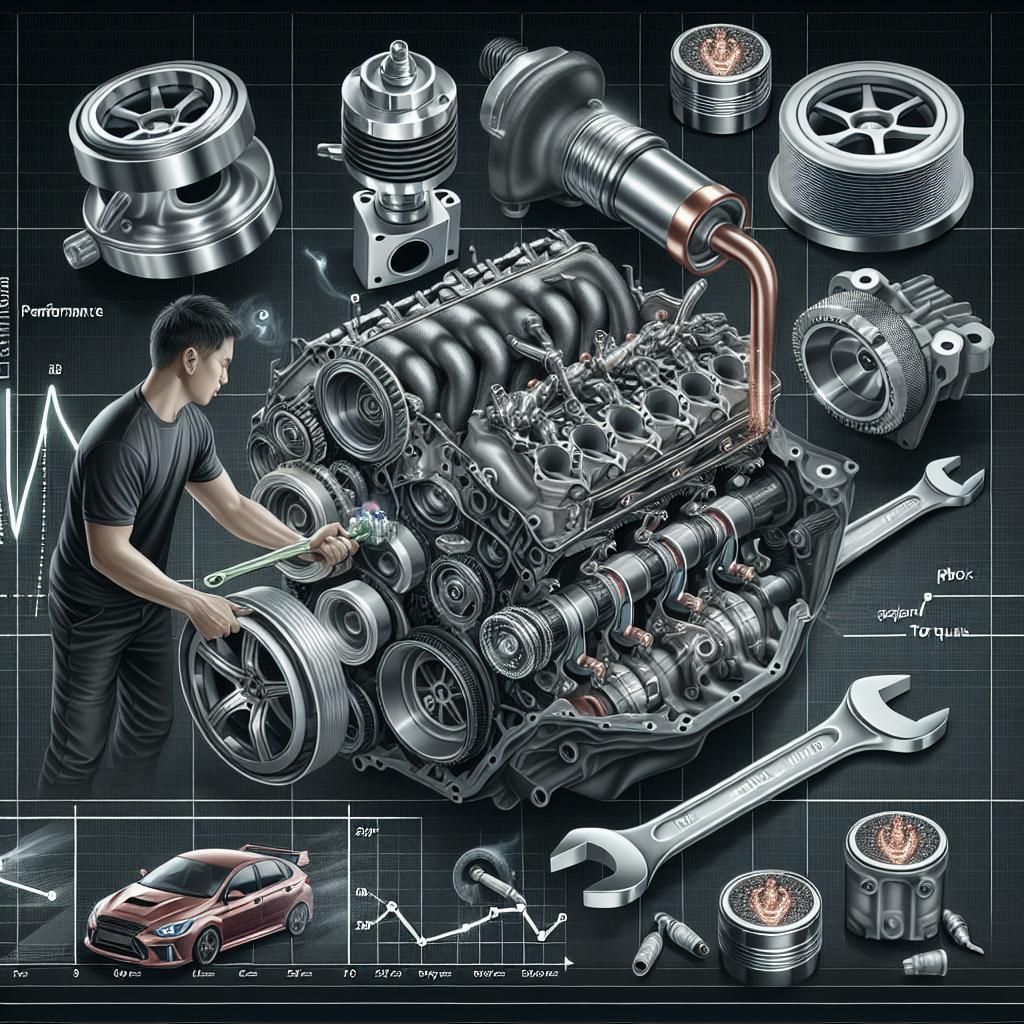“`html
How to Inspect a Used Car Before Purchase
Buying a used car can be a smart financial decision, but it comes with its own set of challenges. A thorough inspection can save you from unexpected repairs and expenses. In this guide, we explore the key steps to take when inspecting a used car. From checking the year and mileage to ensuring the lights are functional, each stage of the inspection process is crucial. We’ll delve into the importance of examining a vehicle’s history report, evaluating its paint job, and assessing the tires’ condition. Additionally, we’ll look at what under-the-hood checks are necessary and why a professional inspection could be a beneficial investment. Finally, we’ve included some financial tips to get pre-approved for your next purchase with ease. Read on to empower yourself in making an informed used car purchase.
Check the year and mileage
The first step in inspecting a used car is to check its year and mileage. These two metrics give you a preliminary idea of the car’s lifespan and potential longevity. A newer car with high mileage might have seen extensive highway use, which is generally less taxing than city driving. Conversely, an older car with low mileage might have been sitting unused for long periods, potentially leading to wear and tear from inactivity.
When evaluating mileage, consider the average annual mileage which typically falls between 12,000 to 15,000 miles. Cars that exceed this range may have more wear on critical components. Use the car’s mileage as a negotiating point, especially if it suggests the need for impending maintenance or repairs.
Check the vehicle history report
Obtaining a vehicle history report is an essential step before purchasing a used car. These reports provide insight into past accidents, title issues, and previous ownership details. They can also reveal whether regular maintenance has been recorded, giving you a clearer picture of how the car has been cared for.
Services like Carfax or AutoCheck offer comprehensive reports that are easy to access. The information they provide can be invaluable in protecting yourself against buying a car with a troubled past. Always ensure the VIN matches the documentation, as discrepancies can be a red flag.
Examine the paint job
The condition of a car’s paint job is often indicative of its overall care and upkeep. Start by inspecting for any inconsistencies in color and texture, which could signal a past accident and subsequent repairs. Look for bubbles and rust spots, especially around the wheel arches and underbody, which might suggest deeper structural issues.
Small scratches and superficial dings are normal for used cars, but significant damage or rust can be costly to repair. Don’t hesitate to ask the seller about any inconsistencies you notice. A professional repaint requires skill and can be a substantial investment if needed.
Inspect the tires for any wear patterns
Inspecting the tires closely can offer hints about the car’s alignment and suspension. Uneven tire wear can signify alignment problems or suspension issues, both of which might require repair. Additionally, check the tire tread by using the penny test for an indication of remaining mileage.
Look at the uniformity of wear from tire to tire and any visible damage like cuts or bulges. Good tires indicate the vehicle was well-maintained, whereas missing tire maintenance could suggest neglect in other service areas.
Check the ground and undercarriage
Before purchase, it’s crucial to examine the ground beneath the car for leaks after it’s been sitting for a while. Look for signs like oil spots, transmission fluid, or coolant residue, which could indicate larger issues. Investigate any visible areas on the undercarriage for rust which can be especially problematic and costly if not addressed.
A flashlight can be helpful for this task, as some of the leaks might not be immediately visible without adequate lighting. A few drips here and there could be normal for older cars, but a pool of fluid is worth the attention of a professional mechanic.
Perform under-the-hood checks
An inspection under the hood can reveal much about a car’s condition. Begin with a general overview, checking for cleanliness and any signs of neglect. Look for corrosion on the battery and ensure that the belts and hoses appear in good condition, free of cracks and wear.
Check fluid levels including oil, transmission, brake, and coolant, and assess their color and quality. Clean, topped-up fluids can hint at regular maintenance, while neglect in this area can lead to costly future repairs. Don’t hesitate to bring a mechanically inclined friend for this part of the inspection if you’re not confident in what to look for.
Check lights
Properly functioning lights are crucial for safety and legal compliance. Test all exterior lights including headlights, tail lights, brake lights, and turn signals. Not only do functional lights ensure your safety on the road, but they also save you from fines associated with broken lamps.
Inspect the interior lighting as well, including the dashboard indicators. Lights that fail to function can sometimes be the result of a minor issue like a blown fuse, but they can also indicate more complex electrical problems that could need professional repair.
Listen out for any unusual noises during your test drive
A test drive is perhaps the most revealing component of a used car inspection. Pay attention to the car’s sound as you drive, noting any unusual noises like grinding, knocking, or squealing. These can be signs of underlying mechanical issues that might require significant repair costs.
During your drive, evaluate the car’s handling, comfort, and responsiveness. Check the brakes, steering, and acceleration for smooth operation. Any hiccups in these areas could suggest further investigation with a professional before purchase.
Book a professional inspection
While an initial DIY inspection can cover many bases, a professional mechanic inspection is an investment that can pay for itself. A mechanic will have the expertise to spot issues that an untrained eye might miss and provide you with an unbiased report on the car’s condition.
Especially if you are serious about purchasing, a comprehensive professional inspection can reveal hidden problems and give you confidence in your decision. Many sellers are open to this, understanding it as a part of the buying process, but it’s always good to confirm beforehand.
Get pre-approved for your next vehicle with ease
The process of purchasing a used car doesn’t conclude with finding the right model—securing the means to finance it is equally important. Getting pre-approved allows you to understand your budgetary constraints and negotiate better.
By setting up financing in advance, you can streamline the purchase process once you’ve found the car you want. Many financial institutions offer competitive rates and seeking this approval will not only make your buying process smoother but might also grant you more leverage in negotiations.
Future prospects
Purchasing a used car is a significant decision requiring diligence and care. By following these thorough inspection steps, you can better evaluate a car’s condition and future prospects. Continue your car-buying journey with confidence, armed with the knowledge and resources to make a decision that meets your needs and budget. This guide will help ensure you drive away with a car that satisfies your expectations, offering reliability and enjoyment for years to come.
| Step | Description |
|---|---|
| Year and Mileage | Analyze age and usage to assess wear and longevity. |
| Vehicle History Report | Uncover past issues and maintenance history through official records. |
| Paint Job | Inspect for inconsistencies and potential underlying problems. |
| Tire Wear Patterns | Check for alignment and suspension clues from tire condition. |
| Ground and Undercarriage | Look for fluid leaks and rust that might indicate larger issues. |
| Under-the-Hood | Evaluate general engine condition, belts, hoses, and fluid levels. |
| Lights | Ensure all lights operate, indicating road safety and electrical health. |
| Unusual Noises on Test Drive | Identify potential mechanical issues through sound and response. |
| Professional Inspection | Obtain expert analysis to uncover hidden problems. |
| Get Pre-Approved | Secure financing in advance to ease the buying process. |
“`


